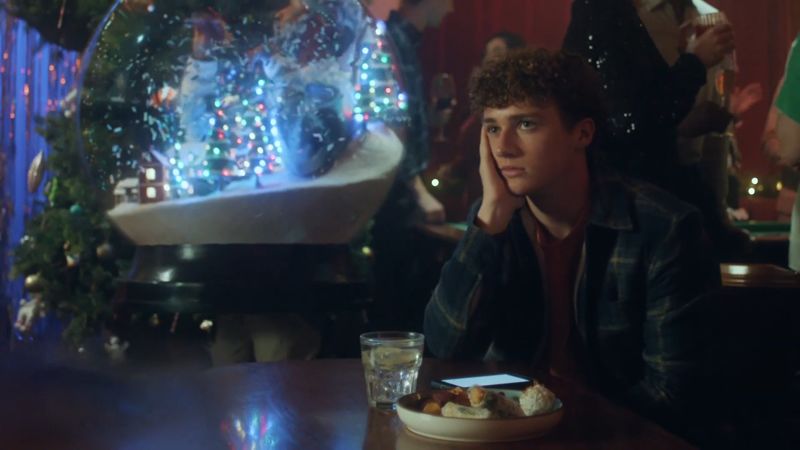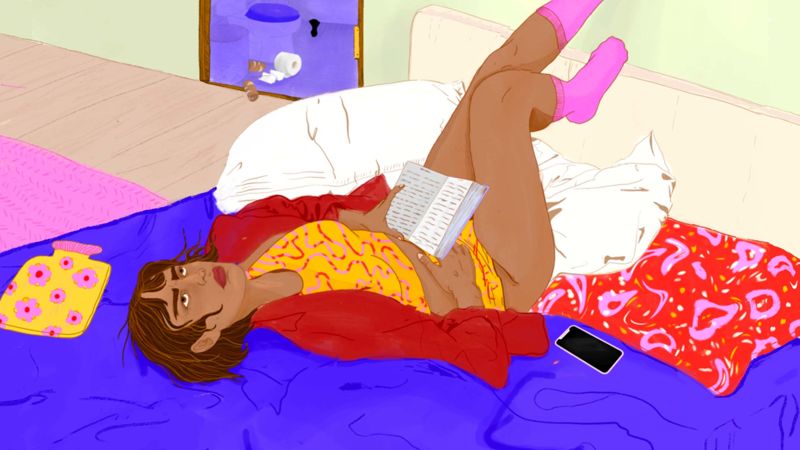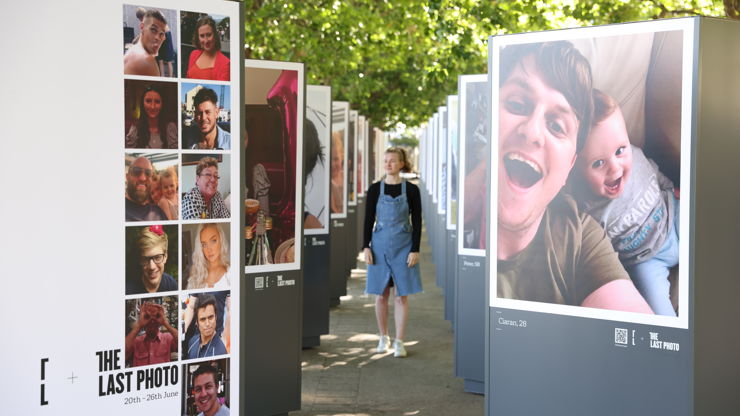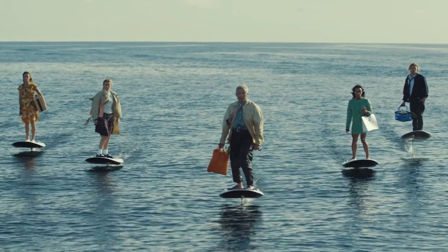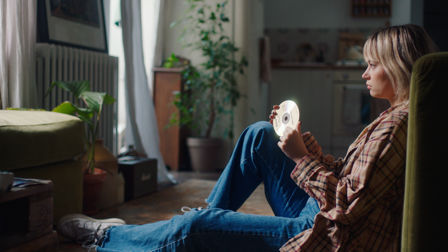Telling authentic stories; the 50 families behind CALM’s The Last Photo
Discussions around suicide are never easy which is why Amy Simmons, Integrated Producer at adam&eveDDB, had to be especially sensitive when creating their recent campaign, The Last Photo. Here, she explains how inclusivity, understanding and involvement were the cornerstones of this powerful piece of work.
What images come to mind when you think about suicidal behaviour?
Our latest work for Campaign Against Living Miserably (CALM), The Last Photo’ aimed to challenge how society views suicide and raise awareness that there can often be very few obvious warning signs. The campaign featured an installation of people, many of them smiling. It wasn’t until visitors reached the end of the experience, on London’s Southbank, that we revealed we were sharing the last pictures taken of people who had soon after taken their own lives.
With such sensitive, emotive and personal subject-matter, we knew immediately that this project couldn’t possibly function like any other.
With such sensitive, emotive and personal subject-matter, we knew immediately that this project couldn’t possibly function like any other. We knew that we had a huge responsibility towards the families involved and we needed to make sure that every individual who had so generously shared a photograph or footage of their loved ones felt listened to, involved and in control at every stage of the campaign, and that they were aware of every detail in its build.
As lead integrated producer, working on a campaign with high levels of sensitivity has taught me a whole new level of duty of care.
Credits
powered by
- Agency adam&eveDDB/London
- Production Company Cain & Abel (In-House at adam&eveDDB/London)
- Director Max Fisher | (Director)
-
-
Unlock full credits and more with a Source + shots membership.
Credits
powered by
- Agency adam&eveDDB/London
- Production Company Cain & Abel (In-House at adam&eveDDB/London)
- Director Max Fisher | (Director)
- Editing Final Cut/London
- Post Production Rascal Post Production
- Sound Wave Studios/London
- Executive Producer Carmen DeWitt
- DP Jim Joliffe
- Editor James Rosen
- Post Producer Jai Mhach Durban
- Post James Ireland
- Colorist James Bamford
- Music Supervisor/Music Producer James Radford
- Music Producer Morgan Pochin
- Music Producer Ben Robbins
- Sound Engineer Parv Thind
- Sound Engineer Jeff Smith / (Audio Mixer)
- Producer Beth Tomblin
- Assistant Producer Richard Bailey
- Assistant Producer Scarlett Rudd
- Chief Creative Officer Richard Brim
- Creative Andy Clough
- Creative Richard McGrann
- Designer Scott Silvey
- Executive Creative Director Antony Nelson
- Executive Creative Director Mike Sutherland
- HP Ben Sharpe
- HP Jack Bayley
- Motion Graphic Designer Edward Christie
- Producer Amy Simmons

Credits
powered by
- Agency adam&eveDDB/London
- Production Company Cain & Abel (In-House at adam&eveDDB/London)
- Director Max Fisher | (Director)
- Editing Final Cut/London
- Post Production Rascal Post Production
- Sound Wave Studios/London
- Executive Producer Carmen DeWitt
- DP Jim Joliffe
- Editor James Rosen
- Post Producer Jai Mhach Durban
- Post James Ireland
- Colorist James Bamford
- Music Supervisor/Music Producer James Radford
- Music Producer Morgan Pochin
- Music Producer Ben Robbins
- Sound Engineer Parv Thind
- Sound Engineer Jeff Smith / (Audio Mixer)
- Producer Beth Tomblin
- Assistant Producer Richard Bailey
- Assistant Producer Scarlett Rudd
- Chief Creative Officer Richard Brim
- Creative Andy Clough
- Creative Richard McGrann
- Designer Scott Silvey
- Executive Creative Director Antony Nelson
- Executive Creative Director Mike Sutherland
- HP Ben Sharpe
- HP Jack Bayley
- Motion Graphic Designer Edward Christie
- Producer Amy Simmons
Above: The 90-second TV spot which formed part of the Last Photo campaign for CALM.
Be open from the start
From the very beginning, this was a journey for everyone involved. We started by presenting the campaign objectives and message to those families that had been bereaved by suicide, along with a request for 't last photo’. We explained what a ‘usage release’ is, why we needed one, the different campaign media and the exposure levels related to different placements. This was a completely un-pressured request and, every step of the way, we reminded families that they could choose to retract anything at any time. This meant we had to be sensitive to individual needs and take a flexible approach to production, with a back-up plan for every eventuality.
From the very beginning, this was a journey for everyone involved.
Take different perspectives into account
We also had a duty to bring all the families into our world so they had a clear vision of what an OOH poster might look like, as one example. The time we spent together with the families, talking through these details, helped ensure there was clarity from both sides. The more we talked to them, the more we were able to gauge those who might be more emotionally resilient and therefore more receptive to their photos being given higher exposure within particular media, and those who only wanted to participate in the exhibition. We kept a tracker to ensure no mistakes were made and each family had total control over where and how their particular image or footage was being used.
Above: The Last Photo campaign included an exhibition of images along a section of London's Southbank.
Keep in touch pre- and post-campaign
The team got together with all the families at key points throughout the project to show them how the creative work was developing, and we were also in constant contact with regards to sharing any work where their photographs or videos were being used. Some of these meetings were very emotional. We felt we had really come to know them and their loved ones and, when we presented the film for the very first time, seeing and hearing their reactions was undoubtedly the most heart-breaking and meaningful moment of our careers.
Tackling wider issues
There were so many photographs donated by people we spoke to in the LGBTQ+ and ethnic minority communities that we could not include. In many ethnic minority communities there is a huge stigma around suicide, which meant families weren’t always comfortable to feature their loved one in the campaign and share their story.
In many ethnic minority communities there is a huge stigma around suicide.
In the LGBTQ+ community many people have been ostracised from their families and therefore, although a partner or friend may have wanted us to include a photograph of them, we could not obtain a Next of Kin release. This project has brought these issues to light and, in partnership with CALM, we hope to follow up with work that specifically speaks to these communities.
)
